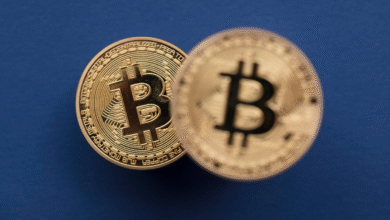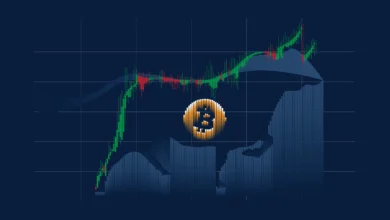
Bitcoin Price Slips Amid Tariff Tensions and Economic Uncertainty
As of May 6, 2025, the Bitcoin price is around $94,384, slightly declining 0.28% from its closing value. Bitcoin price is under pressure, and price swings reflect the larger macroeconomic uncertainty. The top cryptocurrency has witnessed a trading range between $93,702 and $95,118. Rising global trade tensions and economic worries have accompanied these swings, producing investors’ cautious attitude. Consequently, generally considered a speculative investment, Bitcoin is under declining demand.
Bitcoin Falters Amid Tariffs
Particularly since President Donald Trump’s last declaration on new tariffs. The market has been susceptible to changes in world trade policies. Introduced on April 2, 2025, these taxes have caused notable changes in world financial markets, generating more volatility and uncertainty. The so-called “Liberation Day” tariffs have shaken investor confidence since worries about how these trade policies could aggravate world supply chains and cause inflation have grown.

The Cryptocurrency Market has suffered, even if the stock market shows some resiliency, since several indices still show positive trends. Along with other cryptocurrencies, Bitcoin has borne geopolitical concerns and trade conflicts. These elements have caused investors to review their portfolios, and in many cases, Bitcoin has been underlined in favor of less hazardous assets, lowering demand for the digital currency.
New tariffs have directly led to a devaluation of the U.S. dollar, which has lessened attitudes toward high-risk assets like Bitcoin. Bitcoin’s performance has been less favorable as it tries to offset possible inflationary pressures from trade wars, displaying normal market volatility when outside events take center stage.
Bitcoin Faces Headwinds
The growing discontent over the state of the world economy adds yet another layer of difficulty for Bitcoin. Economic data, particularly those on the labor market and inflation, point to possible difficulties ahead. Job growth in the United States has slowed, while inflation still floats over the Federal Reserve’s target rate, generating economic instability.
Therefore, The Federal Reserve will probably keep higher interest rates for a longer period, making conventional financial assets more appealing than non-yielding assets such as Bitcoin. Investors looking for safer havens have flocked to gold, bonds, and the U.S. dollar, further restricting the appeal of cryptocurrency. Worries about a possible world recession are also shaping sentiments. There usually is a rush to safety when markets anticipate an economic downturn; assets like Bitcoin, with their speculative character, usually suffer. Investors are becoming more wary; many choose to cut their exposure to erratic assets in response to worries of a protracted slump.
Institutional Bitcoin Pullback
Institutional investors, who have become key players in the cryptocurrency space, are also showing signs of caution. Recent data reveals that Bitcoin exchange-traded funds (ETFs) have experienced significant outflows, with some ETFs seeing withdrawals of over $1 billion daily. This movement directly responds to the current economic uncertainty and highlights the growing trend of risk-averse behavior among institutional investors.
The outflows from Bitcoin ETFs are particularly notable because institutional investors tend to have a larger impact on market liquidity than retail investors. The reduction in institutional participation has led to a decrease in Bitcoin’s trading volume, contributing to increased volatility in the market. As liquidity wanes, it becomes Bitcoin’s responsibility to maintain price stability, and the market is left more susceptible to swings.
Without the large-scale participation of institutional investors, Bitcoin faces a liquidity crunch that makes it harder for prices to rebound. This reduced market participation is further exacerbated by the wider economic challenges, which are encouraging investors to pull back from riskier assets.
Cryptocurrency Market Struggles
Bitcoin encounters significant challenges in its current surroundings. Although it has shown resilience in earlier market crises, trade tensions, growing tariffs, and economic uncertainty complicate the cryptocurrency’s price movement. The price will probably stay under pressure for the time being while the market processes the more general financial situation.

The path of world trade ties, especially between the U.S. and its main trading partners. They will primarily determine the situation of Bitcoin. Any fix for the tariff problems would help to reduce some of the economic uncertainties and give Bitcoin an opportunity for a comeback. Still, the digital asset market will be under constant pressure from the continuous worries of a world recession and relentless inflationary pressures.
Bitcoin might find it difficult to sustain its increasing pace shortly unless the macroeconomic scene changes significantly or tariffs are lowered. A protracted bear market is a genuine worry, particularly in light of the weak investor mood. Bitcoin’s price might change as the market adapts to the present economic environment. Especially as more investors move from speculative assets to Bitcoin.
Final thoughts
Since Bitcoin is still bound to the $94,000 threshold, its future course will mostly rely on settling world economic issues. The current quashing of investor excitement by tariff tensions and more general economic worry is lowering demand for Bitcoin.
The market will probably remain erratic as institutional investors pull back and ordinary investors grow more wary. Should favorable changes in the economic environment fail to materialize. Bitcoin could stay under pressure, trying to break free from the constraints of doubtful attitudes and financial headwinds.







